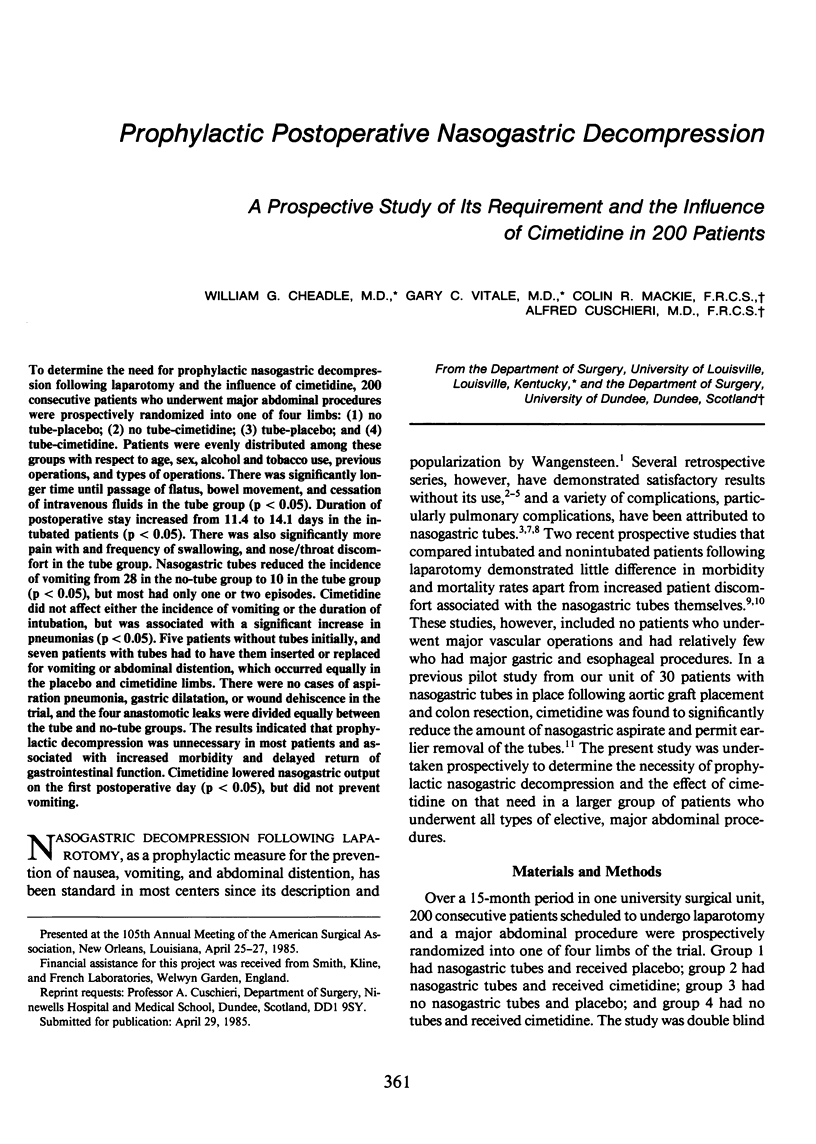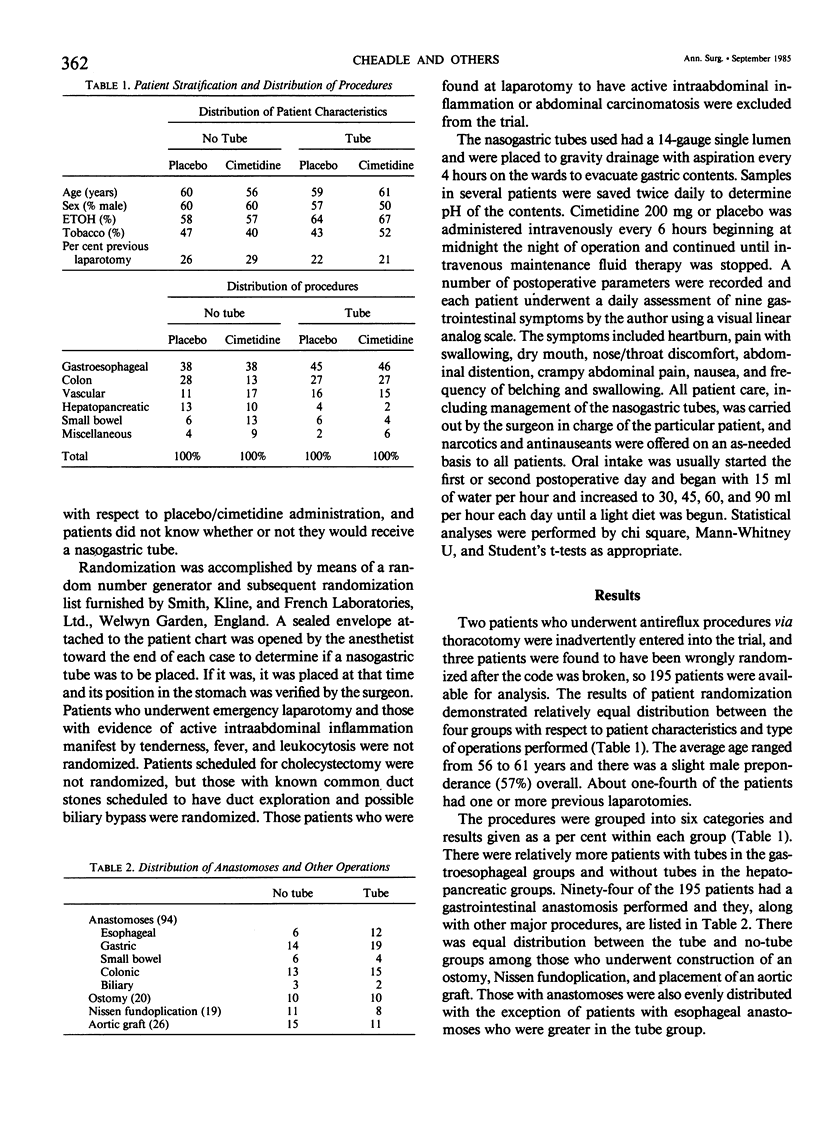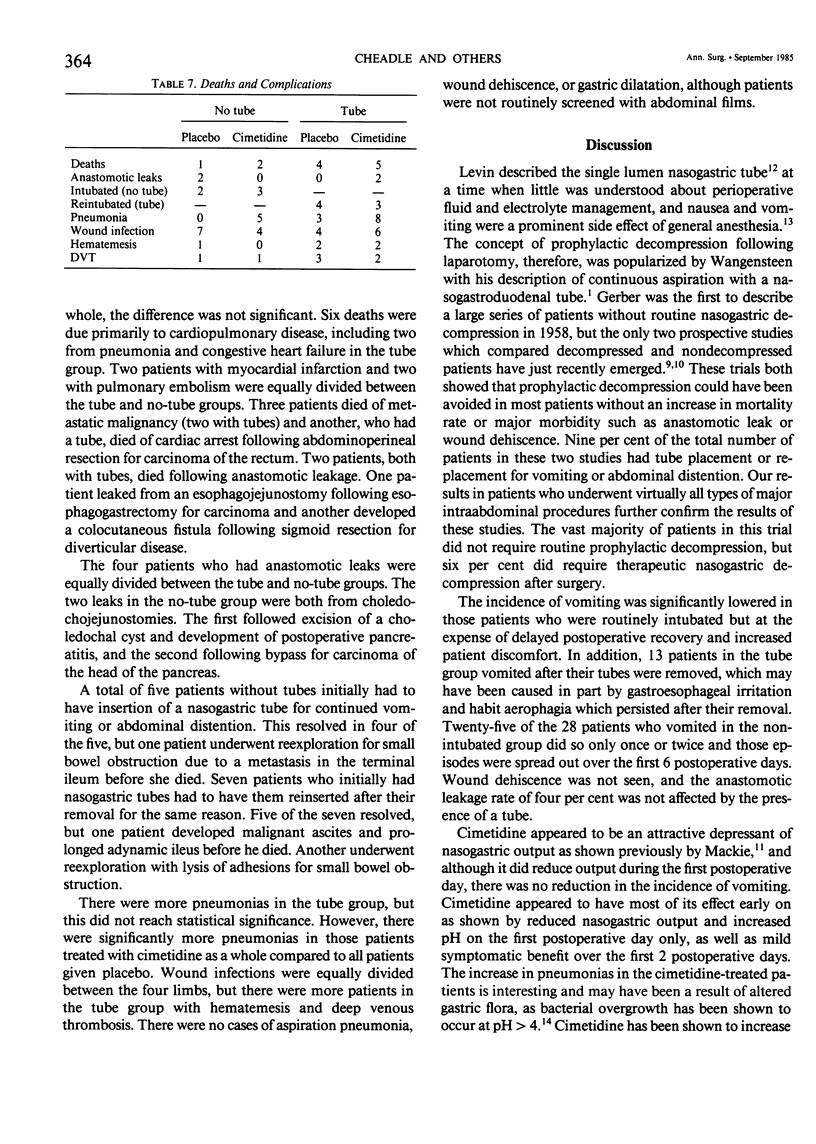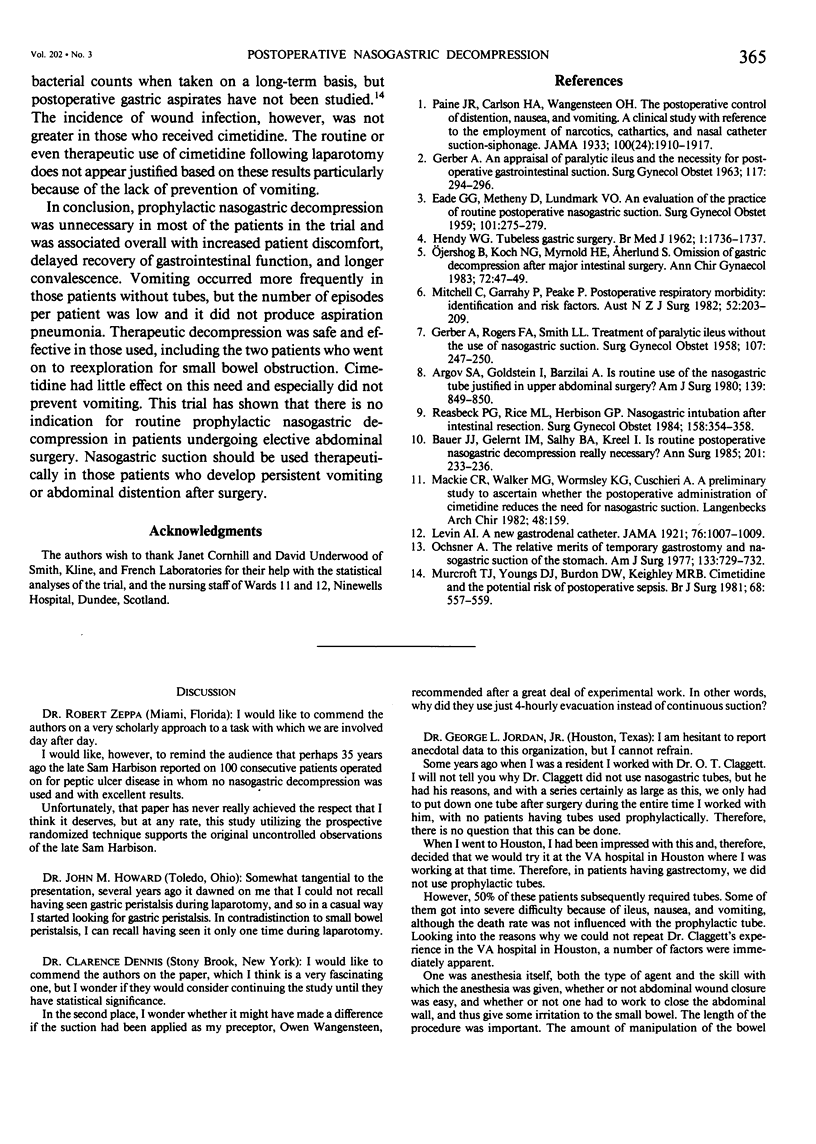Abstract
To determine the need for prophylactic nasogastric decompression following laparotomy and the influence of cimetidine, 200 consecutive patients who underwent major abdominal procedures were prospectively randomized into one of four limbs: no tube-placebo; no tube-cimetidine; tube-placebo; and tube-cimetidine. Patients were evenly distributed among these groups with respect to age, sex, alcohol and tobacco use, previous operations, and types of operations. There was significantly longer time until passage of flatus, bowel movement, and cessation of intravenous fluids in the tube group (p less than 0.05). Duration of postoperative stay increased from 11.4 to 14.1 days in the intubated patients (p less than 0.05). There was also significantly more pain with and frequency of swallowing, and nose/throat discomfort in the tube group. Nasogastric tubes reduced the incidence of vomiting from 28 in the no-tube group to 10 in the tube group (p less than 0.05), but most had only one or two episodes. Cimetidine did not affect either the incidence of vomiting or the duration of intubation, but was associated with a significant increase in pneumonias (p less than 0.05). Five patients without tubes initially, and seven patients with tubes had to have them inserted or replaced for vomiting or abdominal distention, which occurred equally in the placebo and cimetidine limbs. There were no cases of aspiration pneumonia, gastric dilatation, or wound dehiscence in the trial, and the four anastomotic leaks were divided equally between the tube and no-tube groups. The results indicated that prophylactic decompression was unnecessary in most patients and associated with increased morbidity and delayed return of gastrointestinal function. Cimetidine lowered nasogastric output on the first postoperative day (p less than 0.05), but did not prevent vomiting.
Full text
PDF




Selected References
These references are in PubMed. This may not be the complete list of references from this article.
- Argov S., Goldstein I., Barzilai A. Is routine use of the nasogastric tube justified in upper abdominal surgery? Am J Surg. 1980 Jun;139(6):849–850. doi: 10.1016/0002-9610(80)90395-5. [DOI] [PubMed] [Google Scholar]
- Bauer J. J., Gelernt I. M., Salky B. A., Kreel I. Is routine postoperative nasogastric decompression really necessary? Ann Surg. 1985 Feb;201(2):233–236. doi: 10.1097/00000658-198502000-00017. [DOI] [PMC free article] [PubMed] [Google Scholar]
- EADE G. G., METHENY D., LUNDMARK V. O. An evaluation of the practice of routine postoperative nasogastric suction. Surg Gynecol Obstet. 1955 Sep;101(3):275–279. [PubMed] [Google Scholar]
- GERBER A. AN APPRAISAL OF PARALYTIC ILEUS AND THE NECESSITY FOR POSTOPERATIVE GASTROINTESTINAL SUCTION. Surg Gynecol Obstet. 1963 Sep;117:294–296. [PubMed] [Google Scholar]
- GERBER A., ROGERS F. A., SMITH L. L. The treatment of paralytic ileus without the use of gastrointestinal suction. Surg Gynecol Obstet. 1958 Aug;107(2):247–250. [PubMed] [Google Scholar]
- HENDRY W. G. Tubeless gastric surgery. Br Med J. 1962 Jun 23;1(5294):1736–1737. doi: 10.1136/bmj.1.5294.1736. [DOI] [PMC free article] [PubMed] [Google Scholar]
- Mitchell C., Garrahy P., Peake P. Postoperative respiratory morbidity: identification and risk factors. Aust N Z J Surg. 1982 Apr;52(2):203–209. doi: 10.1111/j.1445-2197.1982.tb06103.x. [DOI] [PubMed] [Google Scholar]
- Muscroft T. J., Youngs D., Burdon D. W., Keighley M. R. Cimetidine and the potential risk of postoperative sepsis. Br J Surg. 1981 Aug;68(8):557–559. doi: 10.1002/bjs.1800680812. [DOI] [PubMed] [Google Scholar]
- Ochsner A. The relative merits of temporary gastrostomy and nasogastric suction of the stomach. Am J Surg. 1977 Jun;133(6):729–732. doi: 10.1016/0002-9610(77)90166-0. [DOI] [PubMed] [Google Scholar]
- Ojerskog B., Kock N. G., Myrvold H. E., Akerlund S. Omission of gastric decompression after major intestinal surgery. Ann Chir Gynaecol. 1983;72(2):47–49. [PubMed] [Google Scholar]
- Reasbeck P. G., Rice M. L., Herbison G. P. Nasogastric intubation after intestinal resection. Surg Gynecol Obstet. 1984 Apr;158(4):354–358. [PubMed] [Google Scholar]


